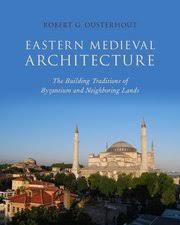
January 19, 2021
The 2021 Haskins Medal is awarded to Robert G. Ousterhout, Eastern Medieval Architecture: The Building Traditions of Byzantium and Neighboring Lands (Oxford: Oxford Univ. Press, 2019).
Committee members: Ruth Evans, Michael Bailey, and Anne D. Hedeman
The result of meticulous on-site field work and research made over a long and distinguished career, Robert G. Ousterhout’s Eastern Medieval Architecture: The Building Traditions of Byzantium and Neighboring Lands is a monumental scholarly achievement. Spanning the period from the third to the sixteenth centuries, it covers the architectural traditions not just of Byzantium but of a number of geographical and chronological peripheries, ranging from Italy through the Eastern Mediterranean and north Africa to the Balkans and the Caucasus, and extending into that tradition’s post-Byzantine legacies in Ottoman and Russian lands. Although the primary focus is on religious buildings, it also covers civic and military architecture and discusses builders and building techniques as well as finished structures. The close attention paid to the architecture of later centuries allows Ousterhout to track cultural interchange and to focus not just on the moment of inception of a building but also on its adaptation over time in response to changing needs and shifting aesthetic criteria.
Ousterhout deftly marshals an enormous amount of information into clear and comprehensible narrative frameworks, presenting innovative approaches to particular forms and also innovating within the field by bringing together varied types of architecture. His study also integrates Islamic culture. He thus provides a model for how to think about cultural traditions in the broadest sense, both how they develop internally and how they interact with other traditions. The book interweaves chronologically ordered chapters with thematic chapters that focus attention on such topics as the ritual use of buildings, the diversity of regional styles, and consideration of the craft of building as it moved from theory to practice by the Middle Byzantine period. Eastern Medieval Architecture wears its erudition lightly. The writing is lively, elegant, and engaging. The book is beautifully produced, and contains a wealth of carefully chosen maps, clear architectural plans, and high-quality photographs – many taken by the author. One of the book’s major contributions is to efface the center-periphery dynamic that still affects so many fields of study. In its consideration of the question “why did medieval architecture in the East follow a different trajectory from that of the West?” this book will change the way in which scholars see Byzantine architecture in relation to Romanesque and Gothic architecture. A work of mature scholarship, this comprehensive study is both an essential foundation for future work on Eastern medieval architecture and an important point of reference for scholars working on other architectural traditions.
Click HERE for more information.

